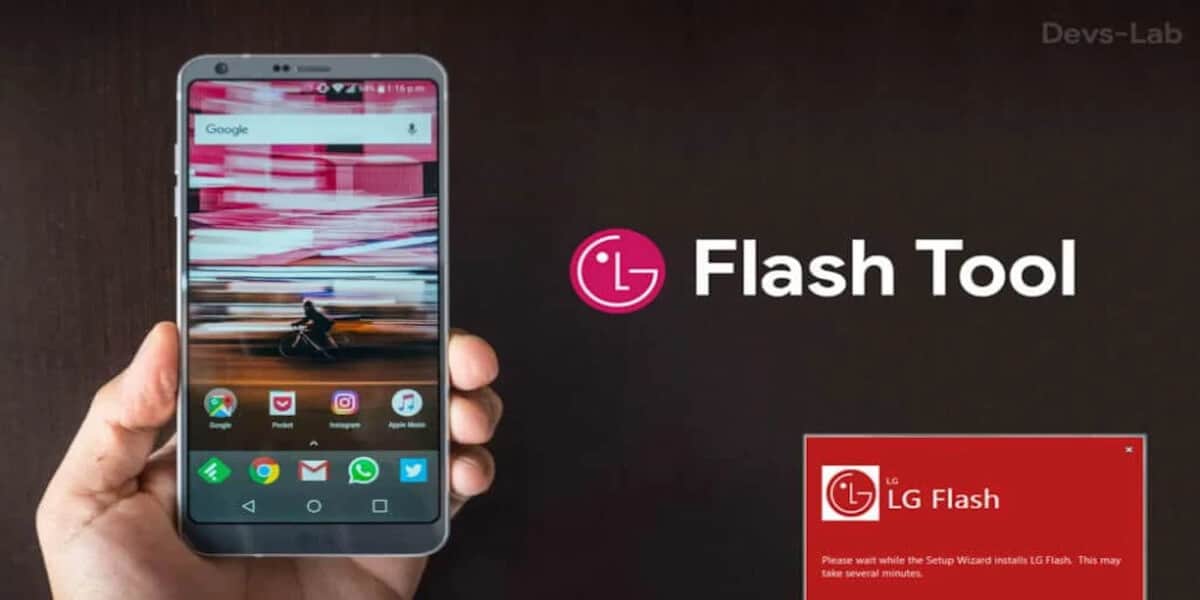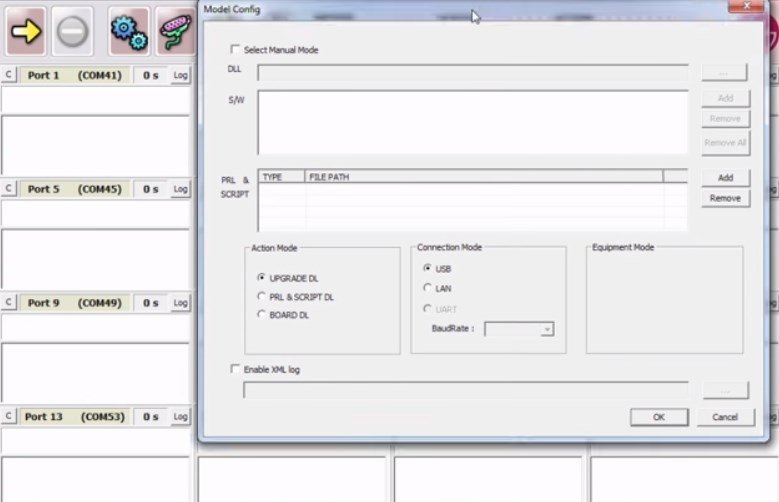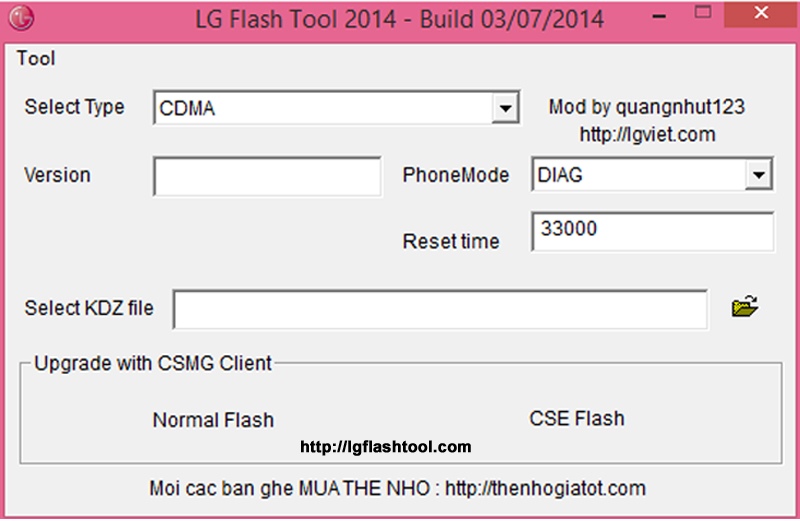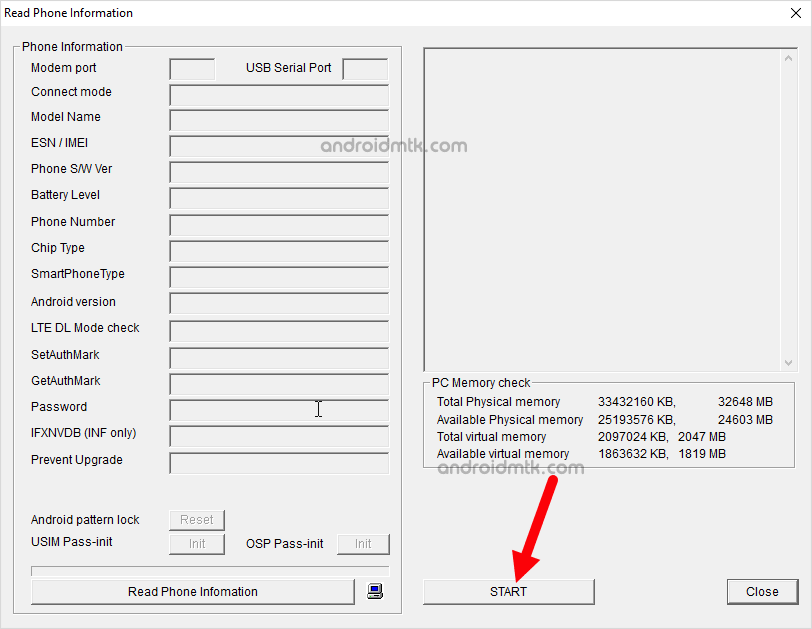

- #Lg flash tool dbms manual
- #Lg flash tool dbms upgrade
- #Lg flash tool dbms software
- #Lg flash tool dbms license
Specification: You first specify how you want to implement the rolling upgrade process. There are three stages to the rolling upgrade process using the DBMS_ROLLING PL/SQL Package: Table 14-1 compares the characteristics of TGP standbys versus LGP standbys before and after a switchover operation. You can then designate the failover target database to take over the role of the LGM. After the LGM has been successfully upgraded, a failure in the LGM can be accommodated by failing over to any of its physical standby databases. You can set up physical standbys for the LGM database, and thus protect it during the upgrade process and also achieve Zero Data Loss after the upgrade. It allows data protection of the LGM (the designated future primary) during the rolling upgrade process. You can initiate a regular failover operation to any other physical standby in the trailing group, and then designate the new primary database as the TGM. The original primary or the TGM database can fail. It can handle failures during the rolling upgrade process. The DBMS_ROLLING package increases the robustness of the rolling upgrade process as follows: The designated future primary is also called the Leading Group Master (LGM) and the original primary database is called the Trailing Group Master (TGM).

The trailing group can contain both physical and logical standbys they are called Trailing Group Physical (TGP) and Trailing Group Logical (TGL) in cases where it is necessary to make a distinction between the standby types. Other than the designated future primary, all other standbys in the leading group can only be physical standbys.

The standbys in the respective groups are called the Leading Group Standbys (LGS) and Trailing Group Standbys (TGS).
#Lg flash tool dbms software
New software is then installed on the databases that are part of the trailing group, and they are reinstated into the configuration as standbys to the new primary database. At this point a switchover is done to transfer the primary role to the designated future primary database, and the user applications are switched over to the new primary database. The trailing group databases continue running the old database software until all the databases in the leading group are upgraded and the future primary has caught up with the original primary by applying the changes that were generated at the original primary database during the upgrade window. While the databases in the leading group are going through the upgrade process, user applications can still be connected to the original primary and making changes. The trailing group contains the original primary database and standby databases that protect the original primary during the rolling upgrade process. Other standby databases in the leading group also must have their software upgraded at this point. The future primary is first converted into a logical standby database and then the new database software is installed on it and the upgrade process is run. The leading group contains the designated future primary database, and the physical standbys that you can configure to protect the designated future primary. To upgrade the database software in an Oracle Data Guard configuration in a rolling fashion, you first designate a physical standby as the future primary database.Ĭonceptually, the rolling upgrade process splits the Oracle Data Guard configuration into two groups: the leading group (LG) and the trailing group (TG).ĭatabases in the leading group are upgraded first hence the name leading group. Such maintenance tasks include:Īdding partitioning to non-partitioned tablesĬhanging BasicFiles LOBs to SecureFiles LOBsĬhanging XMLType stored as CLOB to XMLtype stored as binary XML The database where maintenance is performed must be operating at a minimum of Oracle 12.1.
#Lg flash tool dbms manual
This means that the manual Transient Logical Standby upgrade procedure must still be used when upgrading from Oracle Database 11 g to Oracle Database12 c, or when upgrading from the initial Oracle Database 12 c release to the first patchset of Oracle Database 12 c.Īdditionally, you can use this feature immediately for other database maintenance tasks beginning with Oracle Database 12 c Release 1 (12.1). You will be able to use this feature to perform database version upgrades starting with the first patchset of Oracle Database 12 c (that is, you cannot use it to upgrade from any version earlier than the first Oracle Database 12c patchset).
#Lg flash tool dbms license
The Rolling Upgrade Using Oracle Active Data Guard feature requires a license for the Oracle Active Data Guard option. It is implemented using the new DBMS_ROLLING PL/SQL package, which allows you to upgrade the database software in an Oracle Data Guard configuration in a rolling fashion.

The Rolling Upgrade Using Oracle Active Data Guard feature, new as of Oracle Database 12 c Release 1 (12.1), provides a streamlined method of performing rolling upgrades.


 0 kommentar(er)
0 kommentar(er)
